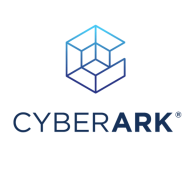

CyberArk Endpoint Privilege Manager and Check Point Harmony SASE compete in the cybersecurity sector. CyberArk seems to have the upper hand in privilege management, while Check Point excels in network access flexibility.
Features: CyberArk Endpoint Privilege Manager includes DNS scanning, lifecycle management, and policies for elevated app access. It also offers password management, session recording, and application control. Check Point Harmony SASE provides zero-trust network access, unified policy management, and advanced threat prevention with user-friendly access control.
Room for Improvement: CyberArk needs better integration with PAM tools, enhanced reporting, and improved technical support. There's also a call for better onboarding and diverse OS integration. Check Point Harmony SASE could improve with more granular control options, better integration with existing security solutions, and enhanced user notifications.
Ease of Deployment and Customer Service: CyberArk is suitable for on-premises or cloud environments but poses support challenges, especially for non-certified users. Check Point Harmony SASE performs well in hybrid cloud environments with reliable support but can be hard to reach for smaller issues.
Pricing and ROI: CyberArk Endpoint Privilege Manager is expensive, with high costs for user accounts and sessions, suited for large organizations. Check Point Harmony SASE offers flexible pricing, suitable for larger companies looking for comprehensive security.
Check Point Harmony SASE (formerly Perimeter 81) blocked access to those URLs at the network level before users could click through.
We are saving 40% of our time, which is good.
Deploying CyberArk Endpoint Privilege Manager has secured the infrastructure, which saves money, time, and resources.
I consider CyberArk Endpoint Privilege Manager's return on investment to be good since it effectively accomplishes the goals expected from privilege access management solutions.
I would rate support 10 out of 10.
People working really hard, listening to every issue and request, and replying within hours.
After updating firmware, data utilization was visible for a few days before collapsing again.
They respond immediately to our inquiries, resolve issues promptly, and provide valuable guidance, especially in critical situations.
We engage them when needed and receive prompt responses that typically resolve our issues.
Earlier, we received support for normal tickets within a day, but now it takes one or two days to resolve issues.
The cloud-native model ensures we are not tied to any specific location or hardware, which has been a great game changer in terms of agility.
The scalability of Check Point Harmony SASE (formerly Perimeter 81) is good, and I can add more users and devices easily as my organization grows.
I would rate it nine out of ten for scalability.
We can set permissions per team or department, allowing some teams to elevate specific applications while others have different permissions.
CyberArk Endpoint Privilege Manager is quite scalable.
The available reports and other security tools assist in scaling it according to my organization's needs.
Even the support team does not have a proper solution for this issue.
There are some lags and glitches with connectivity, so I would rate the stability as between seven or eight out of ten.
After the last improvement, I can say it is much more stable now.
It is a robust solution that has effectively supported our environment without major issues.
Since implementing it, we have not experienced any outages or stability issues.
CyberArk Endpoint Privilege Manager offers multiple options for creating and stopping policies.
An example of when the support cycle took longer than expected was when I had a ticket open for nearly six to seven months regarding a simple issue.
A local data center in Turkey would enhance the product, as currently, our Internet traffic goes to another country, which is problematic for us.
One area for improvement is integration with third-party identity providers.
CyberArk Endpoint Privilege Manager could be improved by simplifying the administration process, specifically when setting up policies and applications.
Currently, no user-based policy option is available inside the EPM console.
Some features provided in the self-hosted version of EPM are not supported in the software as a service version, like connection to some analysis applied by Palo Alto.
Cost efficiency is a consideration, as SASE products are not the cheapest security products.
It is a bit expensive.
My experience with pricing, setup cost, and licensing for Check Point Harmony SASE (formerly Perimeter 81) is that it is a rental service, but I find it satisfactory.
CyberArk Endpoint Privilege Manager is slightly expensive, but costs can be negotiated to become more competitive.
CyberArk Endpoint Privilege Manager is costly compared to other solutions.
I've received feedback that the pricing is high, however, for me, the value it brings is worth the cost.
The firewall management is the most valuable feature for me.
The Zero Trust Network Access (ZTNA) feature is a major highlight as it gives users seamless and secure access to internal resources without requiring a full-blown VPN, which improves both security and user experience.
The Zero Trust and segmentation have helped my team and our customers significantly because we are able to protect every scope and allow the work-from-home users to access internal resources while passing through a threat prevention gateway, ensuring that everything is safe.
CyberArk Endpoint Privilege Manager effectively reduces malicious content in applications by allowing us to identify and block dangerous applications.
It allows them to granularly manage controls to prevent some malicious activities on the endpoint machine.
CyberArk Endpoint Privilege Manager enhances computer security by providing minimal access, effectively preventing ransomware attacks.


Check Point Harmony SASE, formerly Perimeter 81, offers robust security features like split tunneling, MFA, and Zero Trust Network Access focused on secure remote access and optimized connectivity for remote teams.
Check Point Harmony SASE delivers advanced security through a user-friendly interface, efficient VPN connections, and a centralized management console. It enhances security with real-time threat intelligence from ThreatCloud and traffic management via built-in optimization. Firewall as a Service and Secure Web Gateway safeguard against unauthorized access and phishing. While users seek enhanced networking customizations and better integration with identity providers, there's an emphasis on improving reporting, real-time analytics, and policy management. Requests also include a Chrome extension, traffic balancing, and simplified configuration to address some resource-intensive aspects.
What are the key features of Check Point Harmony SASE?
How can organizations benefit from using Check Point Harmony SASE?
Check Point Harmony SASE is used across industries for secure remote access and connectivity, protecting sensitive data, and managing access to corporate resources. It is ideal for those with hybrid cloud models and requires comprehensive security measures combined with existing IT infrastructures to meet specific industry demands.
CyberArk Endpoint Privilege Manager, a critical and foundational endpoint control addresses the underlying weaknesses of endpoint defenses against a privileged attacker and helps enterprises defend against these attacks through removing local admin rights, enforcing least privilege, and implementing foundational endpoint security controls across all Windows, macOS and Linux endpoints from hybrid to cloud environments.
Click here for a free 30 day trial: CyberArk Endpoint Privilege Manager free trial
We monitor all Anti-Malware Tools reviews to prevent fraudulent reviews and keep review quality high. We do not post reviews by company employees or direct competitors. We validate each review for authenticity via cross-reference with LinkedIn, and personal follow-up with the reviewer when necessary.